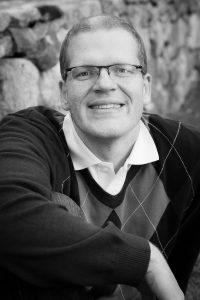 Where do you currently work and what are your job responsibilities?
Where do you currently work and what are your job responsibilities?
I am a group head for immunology and inflammation statistics in Research & Development at Pfizer. I manage a team of 6 statisticians and the work of 20-25 drug programs in this therapeutic area. My job responsibilities have the typical aspects of R&D project work. I sit on teams. I develop clinical plans and plan studies. I calculate sample size, analyze data and interpret data for clinical and non-clinical teams or upper management. In addition to those responsibilities, most of my day-to-day work is managing people, reviewing the work of others or working on the occasional company initiatives.
What do you like most about your current position?
The two things I love most about my job are the cross functional aspects of it and figuring out drug development plans. I love learning about what a drug candidate can really do when it enters human testing. That should be married to a set of experiments that uncover information about safety and efficacy in an economically feasible way. Trying to figure out the right development plan requires synthesis of lots of information, learning about disease and a lot of luck along the way. All of this work has to be cross function which I love. It is great to work closely with physicians, clinical pharmacologist, pharmacometricians, drug manufacturing, biologist and chemists (among many others) to help them understand the importance of statistics and how we can use it to best develop a drug candidate. Interacting with teams and convincing people of the value of statistics is an enjoyable part of my work. How did your experience at Harvard prepare you for your career? Harvard was a great place to understand something about the breadth of biostatistics and to be able to learn from true innovators and leaders. Being able to tap into that innovative spirit and bring more methodologies to statistical design and analysis has been a great help to me in my career. While I don’t do much theoretical work, being able to understand and apply statistics got my career off on the right foot.
Why did you choose to study biostatistics and what led you to Harvard?
My Bachelor’s degree is in statistics. I knew when I graduated that I wanted to dive deeper into the field of statistics. I was most interested in statistics that could be applied to science, which led me to the field of biostatistics. After researching a number of departments, the Biostatistics Department at Harvard caught my eye. I applied hoping to attend Harvard and was fortunate enough to do so.
What was the most rewarding part of your degree program?
I treasure the interactions I had while obtaining my degree more than anything else. The department was a great place to meet people working on interesting problems. Whether it was a class, speaking with faculty, attending a seminar or spending time with my classmates, there were people who challenged my thinking and introduced me to different types of problem solving. My favorite classes introduced me to new paradigms of problem solving, so I enjoyed taking the Bayesian Statistics class from Joe Ibrahim and the Exact Methods and Network Algorithms taught by Cyrus Mehta. While I might not use those methodologies every day, those classes reminded me that there are numerous ways to find solutions and I need to be able to use all the available tools to best understand data. My best memories are filled with my classmates: lunchtime crossword puzzles, difficult homework assignments, dreading qualifying exams or being completely lost in a lecture. Spending time with a small group of people for too many hours a day made for the small memorable moments that make an indelible imprint on your life and personality.
What was the most challenging part of your degree program?
My research was the most difficult part of the degree program for me. I loved working with Paul Catalano, but I didn’t always love fighting with equations and figuring out mathematically compact approximations to multivariate integrals. I enjoyed understanding data more than the theoretical manipulations and learning that lesson during my graduate work helped me understand what I wanted in my career. If I could do things differently, I am sure I would. I made a lot of mistakes. It took time to understand statistics and my research. Yet, all of these mistakes turned into lessons learned and helped me become who I am today. If I chose differently, I may not be where I am today. I will leave it to those who understand casual inference better to explain what my counterfactual life would really be like.
What advice would you give to current or prospective students?
I would advise students to use their time in school to figure out what they are good at and what they enjoy. The people that I have met that are the most fulfilled are those who are doing what they are good at and what they love. (If you aren’t sure, you should ask those you trust and learn to take feedback. It is a gift.) I have learned that communication matters much more than anyone tells you in school. I have learned that self-awareness is the gift that keeps giving. I have learned that the ability to improve yourself is often more valued than what you know. I wish I had learned more about clinical trials as a student. I also wished I had realized how important the communication aspects of working in industry are and spent more time working on these skills.



